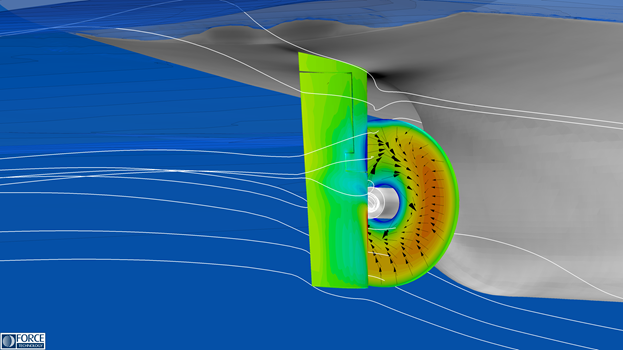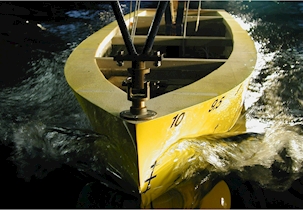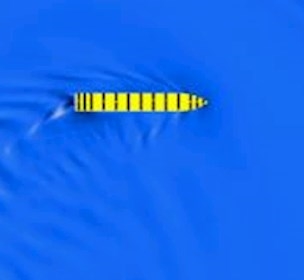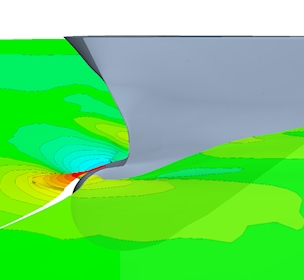Using RANS CFD to determine self-propulsion
As CFD techniques and computer power are developing, the significance of complex CFD simulations as support to traditional towing tank tests, is rapidly growing.
Capturing the impact of the propeller on the flow field around the rudder, aft body, and overall flow fields enables more accurate predictions of power demand.
We are currently implementing a simple Body-Force propeller model in StarCCM+ to enhance the simulation of ships in self-propulsion mode. Body forces are computed by a quasi-steady blade element theory method. This adds more complexity to the flow field and capture more of the rudder-propeller-hull interaction than simpler actuator disk models.

The propeller model calculates thrust and torque based on lift, drag, hydrodynamic pitch angle, radial distance to the propeller's center, and Prandtl’s tip correction factor. The velocity field generated by the propeller when operating behind the hull shows qualitatively good results compared to experimental data.
Experimental open water data is used to fine tune the numerical propeller model. Computed self-propulsion results align well with measured test results from our towing tank.




